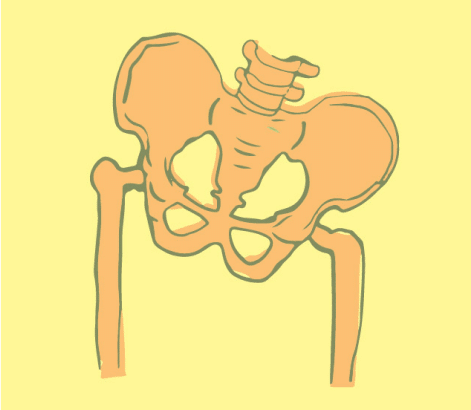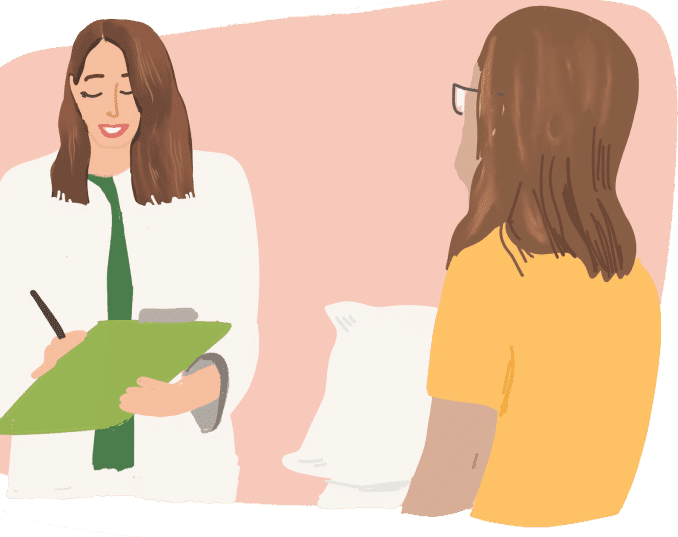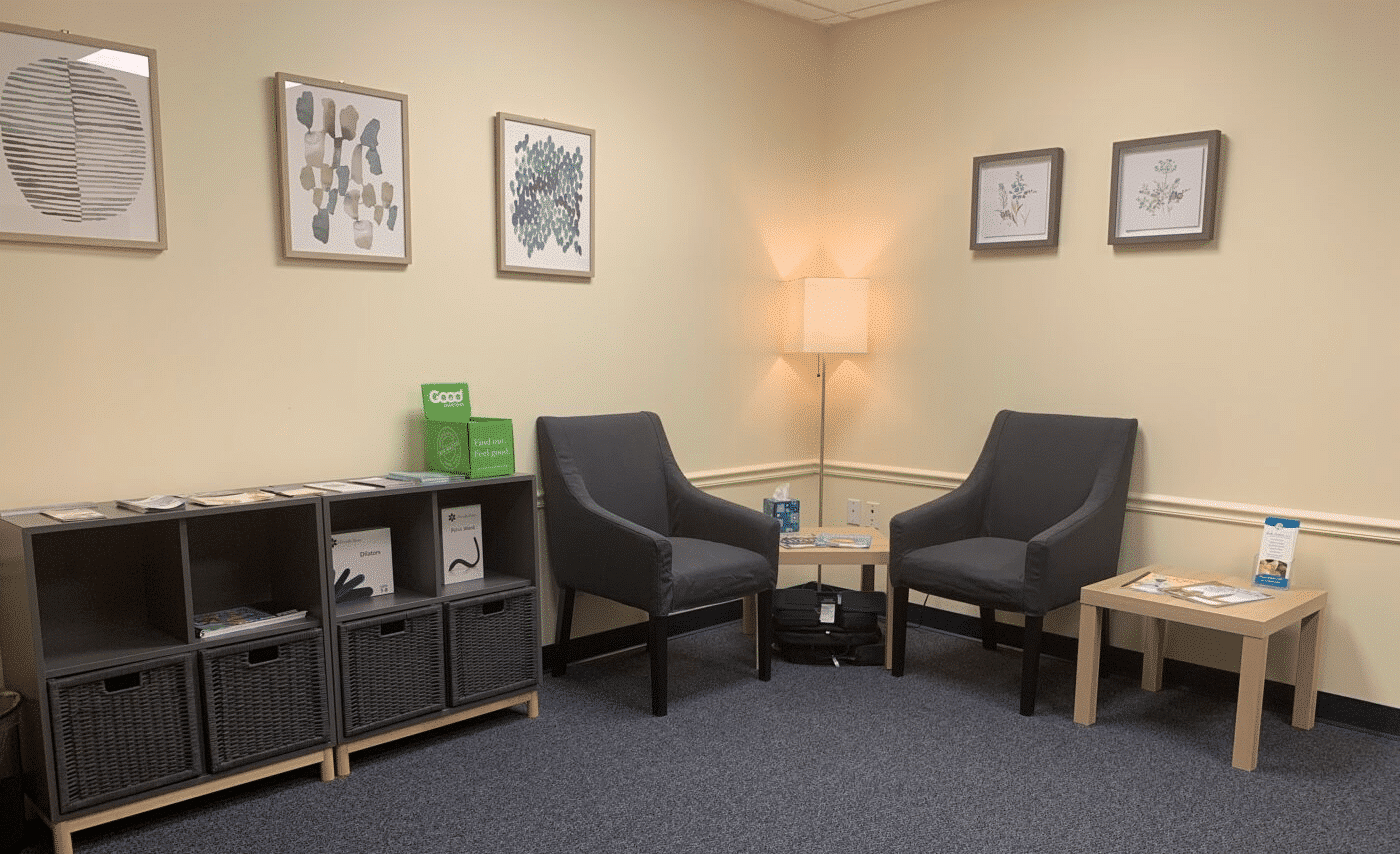

Physical therapists undergo advanced post-graduate education in pelvic floor anatomy and physiology to effectively address the pelvic health needs of their patients. Pelvic floor physical and occupational therapy, while a more recent addition to the broader field of physical and occupational therapy, is growing rapidly—and we’re proud to be contributing to its development. At our core, we are physical and occupational therapistss trained to approach healing holistically, taking both the body and mind into full consideration.
For individuals in Glendale experiencing symptoms connected to pelvic health, we provide care that focuses on restoring balance across the musculoskeletal, nervous, reproductive, urologic, and gastrointestinal systems. Common pelvic health concerns include bladder and bowel dysfunction, sexual health issues, and pelvic pain. These can arise for a variety of reasons such as pregnancy, menopause, surgical procedures, medications, injuries, or trauma. To learn more about how these symptoms present and how we can support your recovery, please explore additional information available on our website.
Physical therapists undergo advanced post-graduate education in pelvic floor anatomy and physiology to effectively address the pelvic health needs of their patients. Pelvic floor physical and occupational therapy, while a more recent addition to the broader field of physical and occupational therapy, is growing rapidly—and we’re proud to be contributing to its development. At our core, we are physical and occupational therapistss trained to approach healing holistically, taking both the body and mind into full consideration.
For individuals in Glendale experiencing symptoms connected to pelvic health, we provide care that focuses on restoring balance across the musculoskeletal, nervous, reproductive, urologic, and gastrointestinal systems. Common pelvic health concerns include bladder and bowel dysfunction, sexual health issues, and pelvic pain. These can arise for a variety of reasons such as pregnancy, menopause, surgical procedures, medications, injuries, or trauma. To learn more about how these symptoms present and how we can support your recovery, please explore additional information available on our website.
Symptoms
Bladder Symptoms
- Urinary urgency, frequency, hesitancy and pain in the absence of infection
- Weak urinary stream
- Leaking urine (incontinence)
- Urethra and bladder pain
- Pain before, during or after urination
- Nocturia (nighttime urination)
- Pediatric bed wetting (nocturnal enuresis)
- Erectile dysfunction: poor quality, inability to achieve erection, inability to maintain erection, premature ejaculation
- Decreased force or inability to ejaculate
- Climacturia (incontinence with orgasm)
- Post ejaculaory pain: tip and/or shaft of penis, perineum, scrotum
- Discoloration in penis/scrotum/perineum
- Burning, itching, aching, or other types of pain in the penis, scrotum, testicles, perineal and/or anal area
- Pain with sitting, certain types of exercises, and certain types of clothing
- Post ejaculatory pain in the penis, scrotum and/or perineum
- Gastrointestinal distress, bloating, and/or constipation
- Symptoms can be provoked, such as in response to ejaculation or exercise, or unprovoked and spontaneous
- Symptoms may be intermittent or constant
Bowel Symptoms
- Straining to evacuate stool
- Adult and pediatric constipation
- Need for excessive toilet paper
- Fecal and/or gas leakage and incontinence
- Hemorrhoids and fissures
- Pain before, during or after bowel movements
- Anal/rectal pain, burning or itching
- Inability or decreased ability to lubricate
- Pain upon vaginal penetration, with deep penetration only, and/or continuous pain with penetration
- Clitoral pain, hypersensitivity to touch
- Pain and/or burning after sexual contact
- Inability to orgasm, diminished orgasm
- Urinary incontinence during sexual activity
- Climacturia (incontinence with orgasm)
- Burning, itching, aching or other types of pain in the vulva, vagina, perineal, and/or anal area
- Pain with intercourse, hypersensitivity when wearing pants and/or underwear, and pain with sitting
- Exercise may provoke or exacerbate symptoms
- Abdominal bloating, gastrointestinal distress, and constipation
- Symptoms can be provoked, meaning with penetrative intercourse or tampon insertion, or unprovoked and spontaneous
- Symptoms can be intermittent or constant
Transgender Pelvic Health Symptoms
- Pain from surgical scars
- Pain with vaginal penetration
- Inability to achieve vaginal penetration
- Difficulty or inability to achieve orgasm
- Urinary dysfunction including urgency, frequency, hesitancy, incontinence and spraying
- Pelvic and low back pain
Chronic Prostatitis/ Chronic Pelvic Pain Syndrome Symptoms
- Aching, pressure, or sharp pain in the perineum, pubic area, or lower abdomen
- Discomfort that feels like it’s coming from the testicles, tip of the penis, or inside the urethra
- Urgency, frequency, weak stream, or the sensation that you can’t fully empty your bladder
- Burning or stinging, even when no infection is present
- Tightness or aching that overlaps with pelvic discomfort
- A sense of heaviness, pressure, or tight muscles in the pelvic floor area

Treatment:
How We Can Help You

If you’re in Glendale and experiencing any of the symptoms mentioned, scheduling a pelvic health physical and occupational therapy evaluation can be a meaningful first step toward healing. During your initial visit, the physical and occupational therapists will thoroughly review your personal health history and current symptoms. We’ll also talk through any past diagnoses and treatments you’ve tried, assessing their effectiveness and relevance to your current condition. We know that by the time many people reach us, they’ve often been dealing with symptoms for quite some time—and we’re here to support you with compassion and understanding.
Your physical exam includes a careful evaluation of muscles, joints, nerves, and movement patterns that could be contributing to your symptoms. After the examination, we go over your findings together so you’re fully informed. The physical and occupational therapists will craft a clear assessment that outlines how your symptoms developed, along with short-term and long-term goals tailored for your recovery. Typically, treatment involves one to two sessions per week over a 12-week period. You’ll also receive a customized home exercise program and coordinated care with other healthcare professionals as needed. Our goal is to help Glendale residents return to the activities they love and live fully.

Treatment:
How We Can Help You
If you’re in Glendale and experiencing any of the symptoms mentioned, scheduling a pelvic health physical and occupational therapy evaluation can be a meaningful first step toward healing. During your initial visit, the physical and occupational therapists will thoroughly review your personal health history and current symptoms. We’ll also talk through any past diagnoses and treatments you’ve tried, assessing their effectiveness and relevance to your current condition. We know that by the time many people reach us, they’ve often been dealing with symptoms for quite some time—and we’re here to support you with compassion and understanding.
Your physical exam includes a careful evaluation of muscles, joints, nerves, and movement patterns that could be contributing to your symptoms. After the examination, we go over your findings together so you’re fully informed. The physical and occupational therapists will craft a clear assessment that outlines how your symptoms developed, along with short-term and long-term goals tailored for your recovery. Typically, treatment involves one to two sessions per week over a 12-week period. You’ll also receive a customized home exercise program and coordinated care with other healthcare professionals as needed. Our goal is to help Glendale residents return to the activities they love and live fully.
Frequently Asked Questions
What are the services offered at PHRC's Pasadena location?
At PHRC’s Pasadena clinic, our experienced physical and occupational therapistss specialize in treating a wide range of pelvic floor conditions. Whether you’re dealing with urinary, bowel, or sexual health concerns, or pelvic pain, our team is equipped to help. We also provide support for those recovering from childbirth, surgical procedures, and injuries that impact the pelvic region.
Who can benefit from PHRC's services?
PHRC Pasadena proudly provides care to individuals of all ages and genders. If you have a pelvis and are experiencing discomfort or dysfunction related to it, our team has the training and expertise to support your recovery and improve your quality of life.
What are the office hours at PHRC's Pasadena location?
Mon-Fri 8am – 5pm
How can I contact PHRC's Pasadena location?
Please call us at (626) 469-0025, fax us at (415) 634-0283, or email us directly at [email protected]
What is the address of PHRC's Pasadena location?
You’ll find us at 960 E Green St, Suite 262, Pasadena, CA 91106.
What is the experience of the practitioners at PHRC's Pasadena location?
Residents of Glendale seeking pelvic health support can turn to the highly trained professionals at PHRC Pasadena. Our clinicians are experts in diagnosing and managing pelvic floor conditions, such as urinary dysfunction, bowel issues, pelvic pain, and sexual health concerns. With national recognition in pelvic health rehabilitation, our team offers exceptional care rooted in extensive clinical expertise.
Does PHRC offer virtual consultations or telehealth services?
To better serve Glendale-area clients, PHRC provides convenient virtual consultations and telehealth options. Our remote care covers various pelvic health concerns, including postpartum recovery, hormonal and nutritional counseling, menopause management, vestibulodynia, and male pelvic pain, among many others.
Does PHRC accept insurance for their services?
Although PHRC Pasadena is out-of-network with insurance providers, we assist Glendale patients by issuing superbills after each session. These include necessary codes for submission to insurance for potential partial reimbursement, and many of our clients do receive some compensation.
How do I know if I should make an appointment at PHRC's Pasadena location?
If you’re in Glendale and facing discomfort or disruptions related to bladder, bowel, or sexual function—or experiencing pelvic pain—our Pasadena team is here to help. We’ll provide a thorough assessment and guide you on your journey to lasting relief.
960 E Green St, Suite 262, Pasadena, CA 91106




